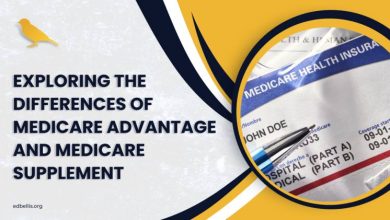Innovation and Accessibility: The Promise of Medicare Advantage Plans in 2025

The landscape of healthcare in America is undergoing a radical transformation, fundamentally reshaping the way we think about patient care and wellness. At the heart of this evolution are the Medicare Advantage (MA) plans, a pivotal pillar in the nation’s healthcare infrastructure. With over 26 million enrollees, Medicare Advantage Plans 2025 continue to grow in popularity due to their innovative approaches in delivering comprehensive health coverage.
In this extensive exploration, we’re not just looking at the present state of MA plans, but we’re casting our vision forward to 2025. What innovations can we expect to see within the MA framework, and how will they further bolster accessibility to high-quality healthcare for seniors? We’ll examine how MA plans are not just adapting to new challenges, but how they’re solidifying themselves as a beacon of change in the healthcare sector.
A Quick Primer on Medicare Advantage Plans
For the uninitiated, Medicare Advantage (Part C) is an alternative to traditional Medicare (Part A and Part B). Private insurance companies that are approved by Medicare offer these plans, and they must cover everything that original Medicare covers, with the exception of hospice care, which is still covered under Part A. MA plans often include additional benefits, such as dental, vision, or prescription drug coverage.
The MA landscape is incredibly diverse, with a multitude of plan options tailored to meet the diverse needs of America’s seniors. In the spirit of innovation, MA plans are not monolithic but are instead a tapestry of various offerings and approaches that encourage competition and choice.
Technology at the Core: Remote Patient Monitoring
One of the most exciting prospects for MA plans in 2025 is the widespread adoption of Remote Patient Monitoring (RPM). With the advancements in wearable health tech and the growing sophistication of telehealth services, RPM is becoming more feasible and scalable for the senior population.
RPM allows healthcare providers to monitor patient health outside of traditional clinical settings, which can lead to early intervention and improved health outcomes. For seniors, this means the comfort of staying in their homes while still receiving high-quality care, and for MA plans, it means reduced hospital readmissions and better management of chronic conditions – a win-win for all parties involved.
The integration of data collected through RPM could also lead to more personalized care plans, tailored to the unique needs of each individual. Expect to see MA plans at the forefront of leveraging data analytics to deliver proactive and predictive care, ultimately leading to a more efficient and effective healthcare delivery model.
Bridging the Gap: Social Determinants of Health
In 2025, MA plans are poised to become more than just health insurers. They are expected to take on a more significant role in addressing social determinants of health (SDOH) – the environmental, social, and economic factors that can impact an individual’s health.
MA plans have already begun to experiment with SDOH initiatives, such as providing transportation for medical appointments, offering home-delivered meals, and supporting the construction of affordable housing. By addressing these non-medical needs, MA plans can reduce healthcare disparities and help members lead healthier lives.
These initiatives not only improve individual health outcomes but also have the potential to drive down healthcare costs in the long term. This approach aligns with a shift towards value-based care, where reimbursements are tied to the quality, rather than the quantity, of services provided.
The Personal Touch: Enhanced Member Engagement
Technology may be the engine driving innovation in MA plans, but the human element remains critical. Enhanced Member Engagement strategies that leverage technology to build stronger relationships between members and healthcare providers will be a key focus for MA plans in 2025.
This means more personalized interactions, proactive communication, and tools that empower members to take control of their health. We can anticipate the development of AI-powered health assistants, mobile apps, and virtual health seminars that cater to the unique preferences and needs of each member.
By enhancing member engagement, MA plans can foster a stronger sense of partnership with their members, which in turn can lead to better adherence to care plans and healthier lifestyles. In the coming years, we should be prepared for increasingly sophisticated member engagement tactics as MA plans vie to differentiate themselves in a competitive market.
Coordinated Care Models: The Future of Service Delivery
The healthcare community has long recognized the benefits of coordinated, team-based care models in improving patient outcomes. In 2025, MA plans are set to fully embed coordinated care models into their operational DNA, with a seamless approach to service delivery that puts the patient at the center.
This could mean that MA plans will take a lead role in organizing care teams that include primary care physicians, specialists, nurses, social workers, and community health workers. These teams will work together to manage the full spectrum of a patient’s needs, ensuring that no aspect of their care falls through the cracks.
We can also expect to see increased collaboration with community organizations and health systems to provide integrated care that extends beyond the clinical walls. Such models are designed to improve the member experience, enhance care quality, and reduce the administrative burden on providers – all priorities for MA plans as they continue their quest for innovation.
The Ripple Effect: Public Health and Wellness
MA plans of 2025 will not only focus on individual health outcomes but will also take a more assertive stance in promoting public health and wellness. They will do so by leveraging their vast member networks to implement preventive health strategies at scale.
This could include sponsoring community health events, offering wellness programs, and supporting initiatives that promote healthy lifestyles. MA plans will become advocates for policies that benefit their members, such as supporting the expansion of public recreation spaces or the implementation of healthier city planning strategies.
A broader public health focus not only reinforces a plan’s commitment to its members’ health and wellbeing but also positions MA plans as key players in the broader healthcare ecosystem. By investing in public health, MA plans could potentially lower healthcare costs for all Americans by reducing the prevalence of chronic diseases and health disparities.
Harnessing Innovation: The Business Side of Medicare Advantage
For MA plans to continue innovating, they must also be savvy on the business front. This means exploring new payment models, such as capitation, to incentivize cost-effective care and manage financial risk more efficiently. It also involves strategic partnerships with technology companies, pharmaceutical manufacturers, and other healthcare stakeholders to drive innovation and offer cutting-edge solutions.
In 2025, we may see more MA plans partnering with retail health giants to offer convenient, comprehensive care options. Such collaborations could lead to the development of cutting-edge healthcare facilities, the integration of health services with retail experiences, and new ways for members to access their benefits.
Furthermore, the use of blockchain technology to securely house and share healthcare data could become a reality, streamlining administrative processes and enhancing data security. MA plans will need to stay on the forefront of these emerging technologies to maintain their competitive edge.
The Road Ahead: Challenges and Opportunities
The road to 2025 is not without its challenges. MA plans will need to navigate regulatory complexities, ensure the privacy and security of member data, and address the digital divide to make sure all members can access the benefits of technological innovation.
However, with these challenges come immense opportunities to drive positive change in the healthcare industry. We can expect MA plans to continue their march toward greater innovation, enhanced accessibility, and improved health outcomes for their members.
The promise of Medicare Advantage plans in 2025 is one of a healthcare system that is more efficient, more personalized, and more attuned to the needs of its beneficiaries. As we inch closer to this future, it’s exciting to imagine the ways in which MA plans will continue to redefine the boundaries of what healthcare can achieve. The seniors of America, and indeed the entire healthcare community, stand to benefit greatly from the strides that will be made within the Medicare Advantage sector. The future is bright, and it’s worth the wait.



